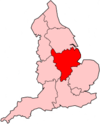Buxton Line
| Buxton Line | |
|---|---|
| Overview | |
| Type | Heavy rail |
| System | National Rail |
| Status | Operational |
| Locale |
North West England East Midlands |
| Termini | Buxton |
| Operation | |
| Owner | Network Rail |
| Operator(s) | Northern Rail |
| Character | Branch line |
| Depot(s) | Longsight Depot, Newton Heath Depot, Stockport Carriage Sidings |
| Rolling stock |
Class 150 Class 156 Class 323 |
| Technical | |
| No. of tracks | Two |
| Track gauge | 1,435 mm (4 ft 8 1⁄2 in) standard gauge |
| Buxton Line | |||||||||||||||||||||||||||||||||||||||||||||||||||||||||||||||||||||||||||||||||||||||||||||||||||||||||||||||||||||||||||||||||||||||||||||||||||||||||||||||||||||||||||||||||||||||||||||||||||||||||||||||||||||||||||||||||
|---|---|---|---|---|---|---|---|---|---|---|---|---|---|---|---|---|---|---|---|---|---|---|---|---|---|---|---|---|---|---|---|---|---|---|---|---|---|---|---|---|---|---|---|---|---|---|---|---|---|---|---|---|---|---|---|---|---|---|---|---|---|---|---|---|---|---|---|---|---|---|---|---|---|---|---|---|---|---|---|---|---|---|---|---|---|---|---|---|---|---|---|---|---|---|---|---|---|---|---|---|---|---|---|---|---|---|---|---|---|---|---|---|---|---|---|---|---|---|---|---|---|---|---|---|---|---|---|---|---|---|---|---|---|---|---|---|---|---|---|---|---|---|---|---|---|---|---|---|---|---|---|---|---|---|---|---|---|---|---|---|---|---|---|---|---|---|---|---|---|---|---|---|---|---|---|---|---|---|---|---|---|---|---|---|---|---|---|---|---|---|---|---|---|---|---|---|---|---|---|---|---|---|---|---|---|---|---|---|---|---|---|---|---|---|---|---|---|---|---|---|---|---|---|---|---|
Legend
| |||||||||||||||||||||||||||||||||||||||||||||||||||||||||||||||||||||||||||||||||||||||||||||||||||||||||||||||||||||||||||||||||||||||||||||||||||||||||||||||||||||||||||||||||||||||||||||||||||||||||||||||||||||||||||||||||
The Buxton Line is a railway line in Northern England, connecting Manchester with Buxton in Derbyshire. Passenger services on the line are currently operated by Northern Rail.
History
It has its origins with the Stockport, Disley and Whaley Bridge Railway, which the LNWR built to connect with the Cromford and High Peak Railway at Whaley Bridge. In 1863, it built an extension from Whaley Bridge, via Chapel en le Frith to Buxton. This forestalled the Manchester, Sheffield and Lincolnshire Railway's plans for the area, and also the Midland Railway's attempts to reach Manchester.
The latter two railways were forced to combine forces in a line following the LNWR, but north of it, through New Mills (part of what is now known as the Hope Valley Line), branching at Millers Dale. As a result, Buxton, one of the largest towns in the Peak, never achieved main line status.
The LNWR had offered the use of the line (at a price, no doubt) but, with its climb through Dove Holes, the Midland did not consider it useful for express trains, saying that it went up a steep hill merely for the sake of going down. The LNWR may have saved costs in construction but it proved difficult to operate, even with the powerful locomotives they had been forced to introduce for their lines north of Manchester. In later days, a seventeen mile stretch was operated using banking engines, the longest such section on the British railway system. In 1957 there was a serious accident at Chapel-en-le-Frith in which driver John Axon, who died at his post attempting to control a runaway goods train, received the George Cross medal.
The line was electrified, at 25 kV AC overhead, between Manchester and Hazel Grove in 1981. Colour light signalling, controlled from LNWR built boxes at Edgeley Junction and Hazel Grove, covers the line as far as Norbury crossing, which itself has a small hut controlling two semaphore signals in the Middlewood area. Farther south, signalling is mostly semaphore and is controlled from boxes at Furness Vale, Chapel-en-le-Frith and Buxton.
Present day services
Over the section between Edgeley Junction and Hazel Grove there are four trains per hour in each direction, more frequently at peak hours. The Manchester to Buxton service runs hourly, combining with an hourly (daytime only) Manchester Piccadilly to Hazel Grove service to give Davenport, Woodsmoor and Hazel Grove stations a half-hourly off peak service to and from Manchester. The latter service now runs to & from Preston via Bolton, replacing the former though route between Buxton and Blackpool North that ran until December 2008.
South of Hazel Grove, the off-peak pattern is hourly. The hourly Liverpool to Norwich East Midlands Trains & Manchester Airport to Cleethorpes Transpennine Express services run over the Edgeley to Hazel Grove section but only a few of these trains call at Hazel Grove, most being non-stop between Stockport and Sheffield.
Due to steep gradients on this line, Class 142 and Class 153 DMUs are banned from the section of line between Hazel Grove and Buxton. Therefore, services to Buxton are worked by Class 150 and Class 156 DMUs. Also Class 158 DMUs were once blocked from operating on the line to Buxton due to the possibility of the large roof-mounted air vents striking low bridges on the route.[citation needed] Piccadilly to Hazel Grove services used to utilise Class 323 electric multiple units, but only one service a day currently uses these units at present on the line. For many years, services on the Buxton branch were in the hands of Class 104 diesel units based at Buxton depot.
Passenger information systems have been installed at Davenport, Hazel Grove and New Mills Newtown.
References
- Pixton, B., (2000) North Midland: Portrait of a Famous Route, Cheltenham: Runpast Publishing
- Bentley, C., (1997) British Railways Operating History: Volume one, The Peak District, Carnarvon: XPress Publishing.
| |||||||||||||
| |||||||||||||

